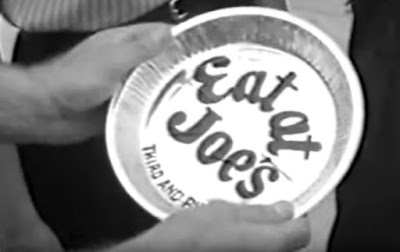 |
| Hartford Courant Oct. 20, 1950 |
 |
| The Minneapolis Star Oct. 20 1950 |
... the story got from Silas Newton to J. Edgar Hoover: Newton told George Koehler (employed at radio station KMYR in Denver), who told Morley Davies, who told Ford dealers Murphy and van Horn, who told auto dealer Fick, who told the editor of the Kansas City Wyandotte Echo. By that time, Koehler had become "Coulter," just like a game of "gossip" (or a game of "pi")!
This article was picked up in the news, where it caught the interest of the OSI. The OSI agent passed the story on to Guy Hottel of the FBI, and he gave the 8th-hand story to Hoover. http://www.nmsr.org/aztec.htm
The FBI Hottel Memo
A version of Silas Newton's story was recorded by agent Guy Hottel of the FBI New Orleans office on March 31, 1950. It's a real document, but it has often been misrepresented, taken out of context. Since it surfaced in the 1970s, the "Hottel Memo" has been frequently cited as evidence of a government cover-up of recovered UFOs, and also falsely linked to another incident, the alleged flying saucer crash known as the "Roswell Incident."
The document itself can be viewed at the FBI Vault:
In 2011, Isaac Koi made a thorough examination of the frequent "re-discoveries" of the Guy Hottel Memo: "Debunked! The FBI alien bodies memo – A case study in the reinvention of the wheel"
Behind the Flying Saucers
Silas Newton's story really caught fire when it was picked up in a national magazine. Frank Scully was a Hollywood gossip columnist, with "Scully's Scrapbook" dishing up tinsel town gab for Variety magazine. Scully was also a respected reviewer of literature and wrote a few books of his own. In 1949, he published two Variety columns on the discovery of flying saucers (Aztec) and a follow-up piece Jan. 11, 1950 with 20 questions he thought the Air Force should answer, accusing the US Government of covering things up.
 |
| Newton and Scully |
Those columns laid the foundation for what is arguably, the most influential book in UFO history, Behind the Flying Saucers, the original story of the cover-up of small alien bodies retrieved from captured UFOs in New Mexico. The tale also featured other elements that would later resurface in the resurrection and expansion of the story of the saucer debris taken to Roswell, such as the recovery and scientific examination of the spaceship's strange light metal, advanced technology and the dead aliens it contained.
The saucer story itself was thin, barely fleshed out from Scully's sketchy columns, but he added details about how oilman Silas Newton had heard about the discs from the mysterious magnetic research scientist Scully called "Dr. Gee," and there was extensive discussion of how the saucers were constructed on the "System of Nines," and flew using magnetic propulsion. Newton was interested in using that alien magnetic technology to detect oil, and that would come to play an important role in his future.
The story was a hoax, part of a scam by Newton to provide an exotic technological origin for the "doodlebug" he was selling with partner Leo GeBauer, a device that was supposed to magnetically detect oil deposits beneath the earth. He was tried and found guilty of fraud in 1953.
 |
| Before: Co-defendant Leo GeBauer, his attorney, and Silas Newton |
 |
| After: Newton Sentenced |
Here's a short version of the Silas Newton Aztec hoax, a non-UFO article examining the episode as just as an oil swindle. It's from the site of the The American Oil & Gas Historical Society:
The Saucers That Time Forgot will be presenting an series of in-depth articles on other early Flying Saucer Swindlers. Next up, Harold J Berney: The FBI’s Flying Saucer Fugitive.
Here's a rare recording of Silas Newton telling the story himself. This undated 24-minute audio was part of Wendy Connor's Faded Discs collection:
The Gift that Keeps on Giving
Although the hoax had its critics, it took two years before it was debunked by J.P. Cahn in "The Flying Saucers and the Mysterious Little Men" in True Magazine, Sept. 1952, and in a follow-up piece in True Magazine, Aug. 1956, "Flying Saucer Swindlers." Newton and Scully exploited the hopes and fears of those interested in the UFO mystery, promoting the belief that extraterrestrials were visiting Earth and that there was a Government conspiracy to hide it. When the hoax was exposed, the story was largely forgotten, but the alien and cover-up concepts were adopted as canonical beliefs. The Air Force was portrayed as a villain in Newton's story and Scully's book, and it continued to be a source of irritation. In 1965, answering a request for information about it, the Air Force replied:
For more on the Frank Scully book, see the previous STTF article,
The Shape of Things to Come
As for Silas Newton's 1950 prediction that a flying saucer would soon land, he was off. It happened in 1952, according to the story told by George Adamski.
 |
| For more on the Adamski hoax, see: Saucer News presents: the George Adamski Exposé |
The Saucers That Time Forgot will be presenting an series of in-depth articles on other early Flying Saucer Swindlers. Next up, Harold J Berney: The FBI’s Flying Saucer Fugitive.
















































